New work shows that histones, long treated as boring spools for DNA, sit at the center of the origin story of eukaryotes and continue to play important roles in evolution and disease.
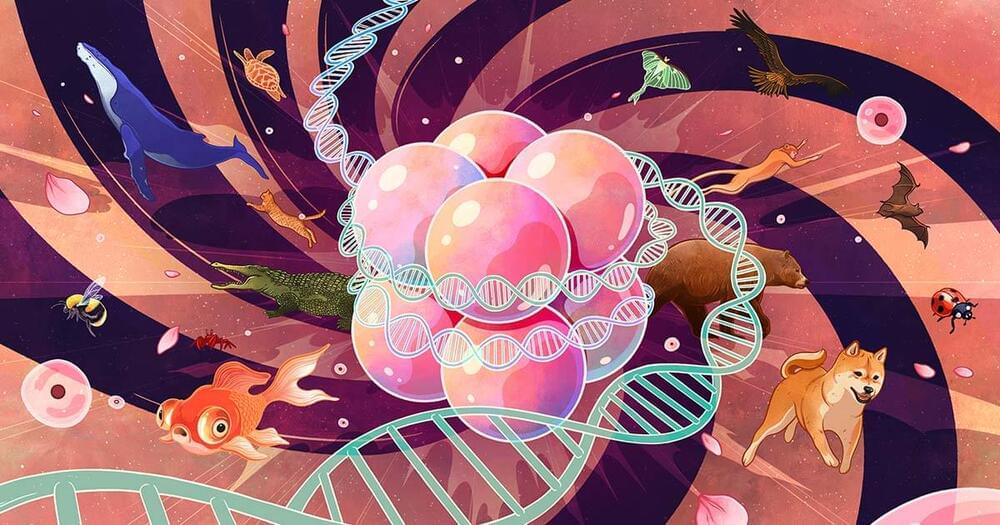


Evolution’s rapid pace after the Cambrian explosion
Though the work of Schopf and other paleobiologists continues to fill in the Precambrian fossil record, questions remain about the pace of the Cambrian explosion. What triggered life to evolve so fast?
The question has intrigued scientists of many disciplines for decades. Interdisciplinary collaboration has wrought a wealth of evidence from diverse perspectives — geochemical, paleoenvironmental, geological, anatomical, and taxonomic — that describes how biological organisms evolved in concert with changing environmental conditions.
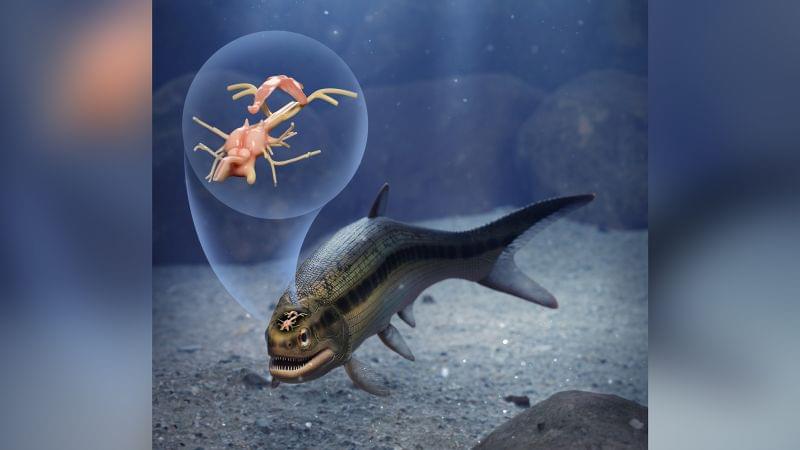
A scan of the skull of a 319-million-year-old fossilized fish has led to the discovery of the oldest example of a well-preserved vertebrate brain, shining a new light on the early evolution of bony fish.
The fossil of the skull belonging to the extinct Coccocephalus wildi was found in a coal mine in England more than a century ago, according to researchers of the study published in the journal Nature on Wednesday.
The fossil is the only known specimen of the fish species so scientists from the University of Michigan in the US and the University of Birmingham in the UK used the nondestructive imaging technique of computed tomography (CT) scanning to look inside its skull and examine its internal bodily structure.

Transhumanism is the idea that technology and evidence-based science can and should be used to augment and improve humans in order to overcome the limitations that evolution has left us with. As the name suggests, it stems from humanism, but it adds an optimism that cognitive and physical improvement is both possible and desirable.
On the face of it, the idea that humans should be permitted to use technology to live healthier and happier lives does not sound dangerous, or even contentious. But it does provoke strong opposition: in 2004, Francis Fukuyama called transhumanism “the world’s most dangerous idea”. The force of that claim is somewhat undermined when you consider how wildly wrong his previous big idea turned out to be: in 1992 he declared that because the Cold War ended with the collapse of the Soviet Union, history had come to an end. Nevertheless, Fukuyama is not alone in fearing transhumanism.
Some people object to transhumanism because they think we should strive to be “natural”, and to be content with what evolution – or their god — have given us. But of course the definition of what is “natural” changes over time. Nature didn’t endow us with spectacles, and few people now argue they should be banned. Now we have cochlear implants, and many people feel that their smartphones are extensions of themselves. In the future we will have the option of raising our IQ with smart drugs or with gene therapy, and these will be hotly debated.
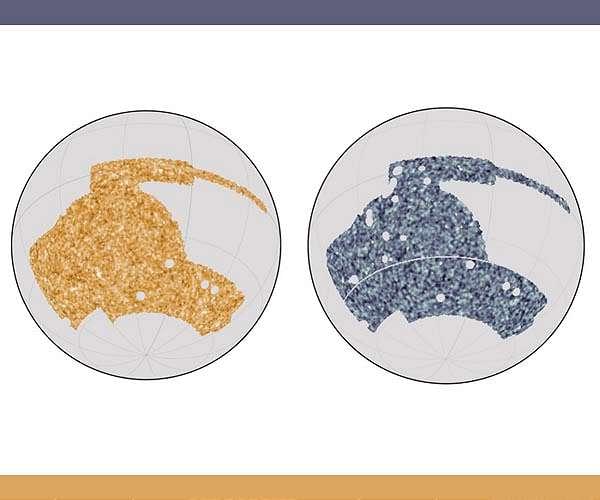
Sometimes to know what the matter is, you have to find it first. When the universe began, matter was flung outward and gradually formed the planets, stars and galaxies that we know and love today. By carefully assembling a map of that matter today, scientists can try to understand the forces that shaped the evolution of the universe.
A group of scientists, including several with the University of Chicago and Fermi National Accelerator Laboratory, have released one of the most precise measurements ever made of how matter is distributed across the universe today.
Combining data from two major telescope surveys of the universe, the Dark Energy Survey and the South Pole Telescope, the analysis involved more than 150 researchers and is published as a set of three articles Jan. 31 in Physical Review D.
God, they say, is in the details. But could God also be in our frontal lobes? Every culture from the dawn of humankind has imagined planes of existence beyond the reach of our senses, spiritual domains that shape our Earthly experiences. Why do beliefs of the fantastic hold such powerful sway over our species? Is there something in our evolutionary history that points to an answer? Does neuroscience hold the key? Straddling the gap between science and religion, Brian Greene is joined by renowned neuroscientists, anthropologists, and evolutionary biologists, to explore one of the most profound mysteries of our existence.
PARTICIPANTS: Lisa Barrett, Barbara J. King, Zoran Josipovic, Steven Pinker.
MODERATOR: Brian Greene.
MORE INFO ABOUT THE PROGRAM AND PARTICIPANTS: https://www.worldsciencefestival.com/programs/believing-brai…-instinct/
This program is part of the BIG IDEAS SERIES, made possible with support from the JOHN TEMPLETON FOUNDATION.
- SUBSCRIBE to our YouTube Channel and “ring the bell” for all the latest videos from WSF
(http://www.evol-net.fr/index.php?option=com_tlpteam&view=team&id=2&Itemid=559) is a Research Director at the French National Centre for Scientific Research (CNRS), the French state research organization and the largest fundamental science agency in Europe.
Dr. Bapteste has both a Ph.D. in evolutionary biology from Pierre and Marie Curie University and a Ph.D. in the philosophy of biology from Pantheon-Sorbonne University.
Dr. Bapteste is the Co-Director of the Adaptation, Intégration, Réticulation, Evolution (AIRE) team, which develops new methods and new concepts, in particular related to biological networks, in order to study evolution and aging. Specifically, the AIRE team works to enhance the evolutionary theory i) by expanding its scope by targeting additional objects of studies (such as novel units of selection and novel still unknown taxonomical groups from the microbial dark matter, and mobile elements) and ii) by expanding evolutionary studies towards more general models, able to in particular account for chimerism and interactions between biological elements, from molecules to ecosystems.
Dr. Bapteste is the author of 95 scientific articles and 4 books of popular sciences: “Les gènes voyageurs: l’odyssée de l’évolution”, “Conflits intérieurs: fable scientifique”, “Tous entrelacés! Des gènes aux super-organismes, les réseaux de l’évolution”, and “Tout se transforme! Comment marche l’évolution”.
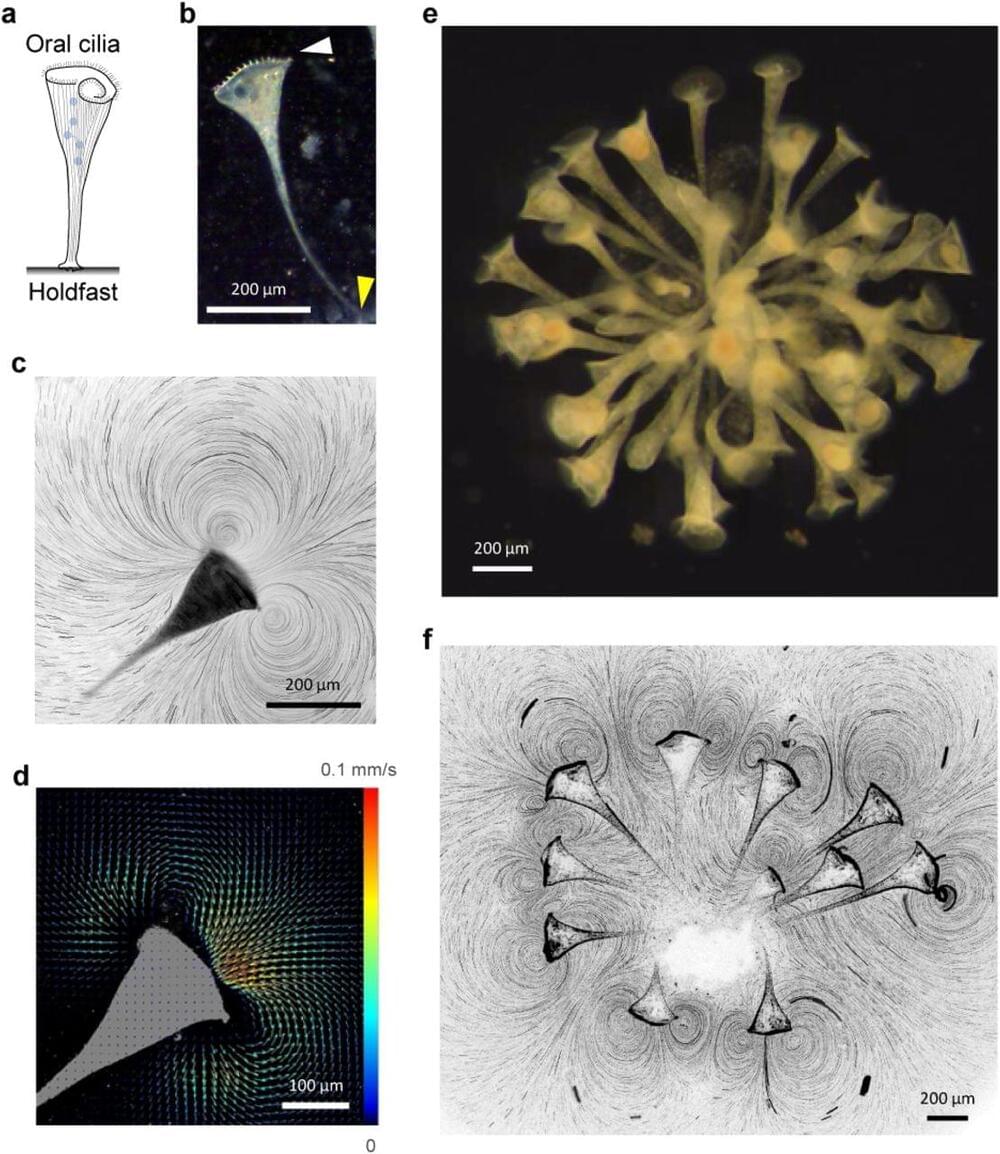
Evolution of multicellularity from early unicellular ancestors is arguably one of the most important transitions since the origin of life1,2. Multicellularity is often associated with higher nutrient uptake3, better defense against predation, cell specialization and better division of labor4. While many single-celled organisms exhibit both solitary and colonial existence3,5,6, the organizing principles governing the transition and the benefits endowed are less clear. Using the suspension-feeding unicellular protist Stentor coeruleus, we show that hydrodynamic coupling between proximal neighbors results in faster feeding flows that depend on the separation between individuals. Moreover, we find that the accrued benefits in feeding current enhancement are typically asymmetric– individuals with slower solitary currents gain more from partnering than those with faster currents. We find that colony-formation is ephemeral in Stentor and individuals in colonies are highly dynamic unlike other colony-forming organisms like Volvox carteri 3. Our results demonstrate benefits endowed by the colonial organization in a simple unicellular organism and can potentially provide fundamental insights into the selective forces favoring early evolution of multicellular organization.
Suspension-feeding unicellular protists inhabit a fluid world dominated by viscous forces that limit prey transport for feeding 3,7,8. Using either flagella or cilia, many of these organisms generate microcurrents that actively transport dissolved nutrients and smaller prey critical for their nutrition 3,9,10. A protist’s ability to favorably alter its feeding current so as to enhance feeding rate would therefore be beneficial to its survival. Can colony formation enable unicellular protists to enhance their feeding flows? Colonial protists have been suggested to generate stronger flows by combining individual feeding microcurrents of neighboring colony members. Colony forming protists can broadly be classified into two categories depending on presence (or absence) of physical linkages between colony members.
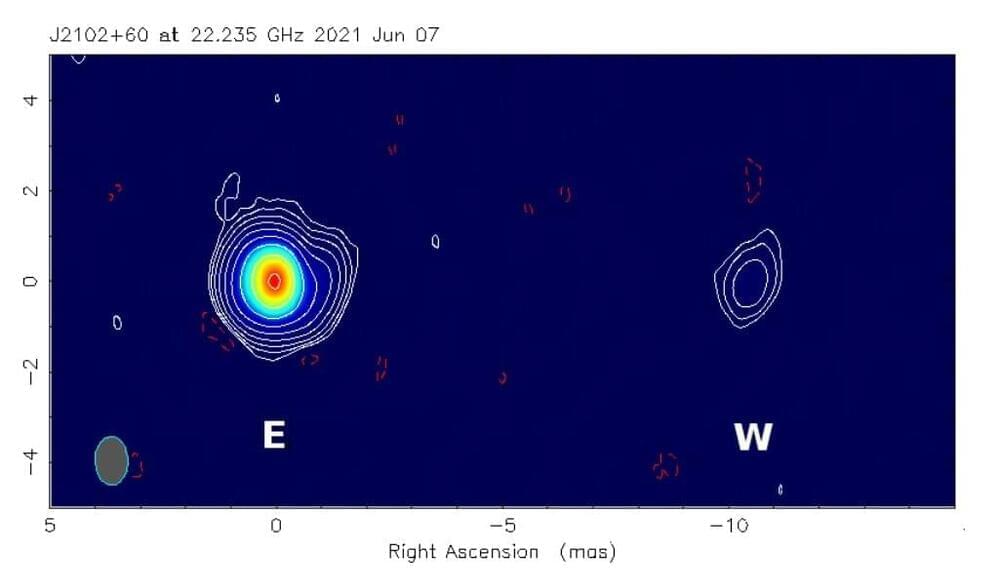
Using the European VLBI Network (EVN), an international team of astronomers has performed high-resolution imaging observations of a powerful and radio-loud high-redshift quasar known as J2102+6015. Results of the observational campaign, presented January 18 on the preprint server arXiv, could help us better understand the nature of this peculiar quasar and other powerful radio sources.
Quasars, or quasi-stellar objects (QSOs), are extremely luminous active galactic nuclei (AGN) containing supermassive central black holes with accretion disks. Their redshifts are measured from the strong spectral lines that dominate their visible and ultraviolet spectra.
Astronomers are especially interested in finding new high-redshift quasars (at redshift higher than 4.5) as they are the most luminous and most distant compact objects in the observable universe. Spectra of such QSOs can be used to estimate the mass of supermassive black holes that constrain the evolution and formation models of quasars. Therefore, high-redshift quasars could serve as a powerful tool to probe the early universe.
Our lifespans might feel like a long time by human standards, but to the Earth it’s the blink of an eye. Even the entirety of human history represents a tiny slither of the vast chronology for our planet. We often think about geological time when looking back into the past, but today we look ahead. What might happen on our planet in the next billion years?
Written and presented by Prof David Kipping, edited by Jorge Casas.
→ Support our research program: https://www.coolworldslab.com/support.
→ Get Stash here! https://teespring.com/stores/cool-worlds-store.
THANK-YOU to our supporters D. Smith, M. Sloan, C. Bottaccini, D. Daughaday, A. Jones, S. Brownlee, N. Kildal, Z. Star, E. West, T. Zajonc, C. Wolfred, L. Skov, G. Benson, A. De Vaal, M. Elliott, B. Daniluk, M. Forbes, S. Vystoropskyi, S. Lee, Z. Danielson, C. Fitzgerald, C. Souter, M. Gillette, T. Jeffcoat, J. Rockett, D. Murphree, S. Hannum, T. Donkin, K. Myers, A. Schoen, K. Dabrowski, J. Black, R. Ramezankhani, J. Armstrong, K. Weber, S. Marks, L. Robinson, S. Roulier, B. Smith, G. Canterbury, J. Cassese, J. Kruger, S. Way, P. Finch, S. Applegate, L. Watson, E. Zahnle, N. Gebben, J. Bergman, E. Dessoi, J. Alexander, C. Macdonald, M. Hedlund, P. Kaup, C. Hays, W. Evans, D. Bansal, J. Curtin, J. Sturm, RAND Corp., M. Donovan, N. Corwin, M. Mangione, K. Howard, L. Deacon, G. Metts, G. Genova, R. Provost, B. Sigurjonsson, G. Fullwood, B. Walford, J. Boyd, N. De Haan, J. Gillmer, R. Williams, E. Garland, A. Leishman, A. Phan Le, R. Lovely, M. Spoto, A. Steele, M. Varenka, K. Yarbrough & F. Demopoulos.
::Music::
Music licensed by SoundStripe.com (SS)[shorturl.at/ptBHI], Artlist.io, via Creative Commons (CC) Attribution License (https://creativecommons.org/licenses/by/4.0/), or with permission from the artist.
► 00:00 Hill — All Flesh Is as the Grass [https://open.spotify.com/track/1WuMK4qy9tUSGMINoEClxL?si=5635838259b34fa4]
► 03:56 Hill — The Great Alchemist [https://open.spotify.com/track/3PAx36jIsKiQMT9CQsRk4G?si=035fc819505445a1]
► 07:50 Outside the Sky — Trillions.
► 11:41 Hill — We Are Unceasing Beings [https://open.spotify.com/track/3TnhawPMycRrPuTnKzNGNN?si=bddf4e61177d48c4]
► 14:57 Indive — Halo Drive.
::Chapters::